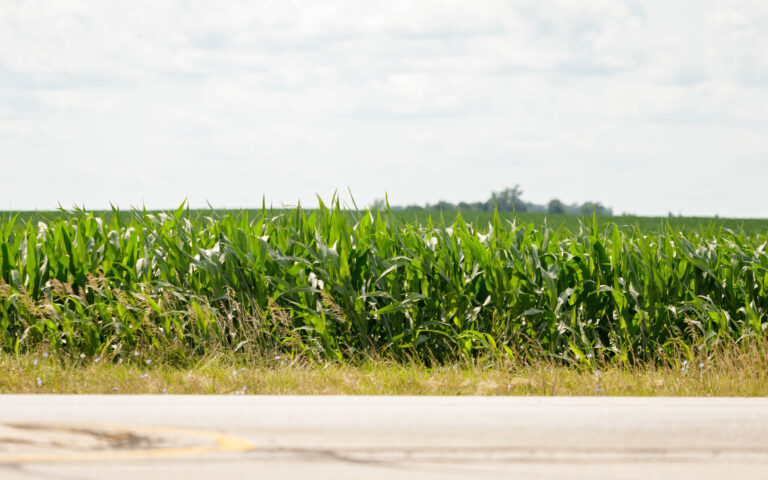NORMAL — Over the next five years, the Diverse Corn Belt project will be conducting research to discover opportunities that can be created from diversified farming systems and investigate the impacts of transformed crop rotations.
The multidisciplinary research project funded by a $10 million grant from the USDA’s National Institute of Food and Agriculture will explore agriculture diversification at the farm level, market level, and landscape level. The team, which includes Illinois State University researchers, is looking at the implications for moving beyond the traditional rotation of corn and soybean crops.
“The goal of the Diverse Corn Belt project is to engage with farmers and other agricultural stakeholders to find concrete options for diversification and to help understand the real world, agronomic, economic, social, infrastructure and policy challenges that could enable a more diversified Corn Belt,” said Emily Usher, the Diverse Corn Belt project manager out of Purdue University.
The research team will collect biophysical data from farms that volunteer to participate in the project as well as market data from all parties throughout the supply chain, said Usher.
“The project sort of focuses on three main objectives related to agricultural diversification,” Usher said. “So the first is diversification at the farm scale … We’re exploring biophysical impacts – soil, water, insects – of more diversified operations, and we’re comparing them to conventional operations, which we consider to be sort of the general corn and soy operation.”
Usher said the diverse products and practices their research will focus on includes extended crop rotations, grazed livestock, horticultural food crops, small grains, and agroforestry.
“At the market level, we recognize the need for diverse markets for both producers and consumers, and the importance of meeting the needs of all the people across the value chain,” said Usher. “We are exploring opportunities and barriers to accessing and developing more diversified markets to meet the needs of diversified products, and consumers who want diversified products.”
Dr. Aslihan Spaulding, professor of agribusiness and food industry management in the Department of Agriculture at Illinois State University, says market data will be collected from focus groups as well as surveys taken by the National Grocers Association, NGA members, independent retailers, food manufacturers, restaurant owners and consumers.
“Corn and soybeans are well-known commodities, and farmers do have established markets, a supply chain. But for the nontraditional crops, like in specialty crops, it’s not the same thing. Access to markets can be challenging, or it could be sparse,” said Spaulding.
In addition to the market research, the team is also exploring policy changes that could be made to create a more diverse corn belt. Expansion of crop insurance to cover more nontraditional crops would help mitigate the financial risk and also increases a bank’s ability to provide loans, said Usher.
“Finally, at the landscape level, we’re exploring if the widespread adoption of these more diversified practices can increase resiliency while still achieving our profit, yield and ecosystem service goals,” said Usher.
For farmers interested in participating in the research, it’s not a huge commitment, said Michael O’Donnell, the Diverse Corn Belt’s regenerative agriculture coordinator from Purdue.
“Because it’s mainly a data collection. We’re not asking these farmers to actually change anything, or conduct or manage research plots,” said O’Donnell. “We just want them to farm how they farm, and the research team is going to be collecting data and information from their operations.”
The research team will also be conducting three focus groups in different regions of Illinois throughout August. There will be a focus group in McLean County on Aug. 15, McHenry County on Aug. 23, and Morgan County on Aug. 24.
To participate in a focus group, with on-farm research, or sign up for the Diverse Corn Belt newsletter, visit diversecornbelt.org.

